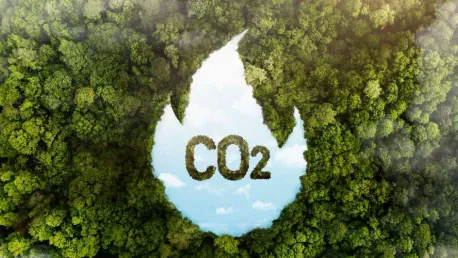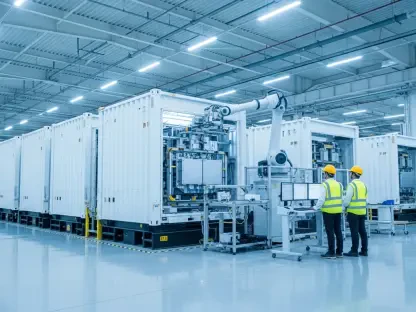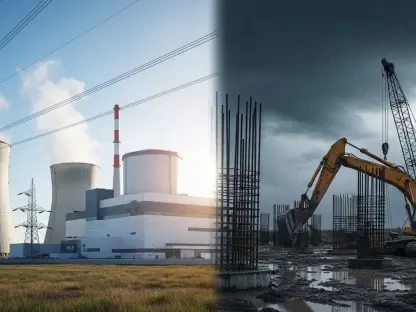The rising integration of renewable energy sources, such as solar and wind, alongside growing power demands, has created an urgent need to stabilize electricity grids. As the global community strives to decarbonize, it increasingly turns to renewable energy as the primary mode of power generation. Global policy and financial efforts aimed at meeting net-zero goals continue to drive the expansion of renewable energy infrastructure. Nevertheless, the inherent intermittency of renewables poses significant challenges for electricity grids, which once relied on the consistent baseload power provided by fossil fuels and nuclear energy.
The Challenge of Grid Stabilization
Traditional electricity systems relied on constant energy inputs from fossil fuels and nuclear power to ensure stable grid operation. Renewable energy sources such as solar and wind, on the other hand, produce power intermittently, making it difficult to balance energy supply and demand. The need for a carbon-neutral or even carbon-negative stabilization service has become increasingly apparent as the energy sector transitions away from fossil fuels. These new stabilization services must be controllable, reliable, and dispatchable to mimic the consistency previously afforded by traditional baseload power plants.
Gas turbine power plants currently provide the necessary dispatchable energy that helps balance supply and demand. However, their role in a carbon-free future remains uncertain. Gas turbines, although more flexible than other fossil fuel plants, still produce greenhouse gases. Hence, they are unlikely to fit into long-term strategies aimed at achieving net-zero emissions. The quest for alternative solutions that can offer similar grid stabilization benefits without the associated carbon emissions is intensifying.
Hydrogen: A Versatile Solution
Energy Storage and Dispatch
Hydrogen emerges as a promising solution in this evolving energy landscape due to its remarkable versatility and potential for grid stabilization. Clean hydrogen can function as a storage medium for renewable energy, effectively capturing and storing excess electricity when production from renewables exceeds grid usage—a scenario often referred to as “curtailed” electricity. This stored hydrogen can then be converted back into electricity and injected into the grid during periods of low renewable output, greatly enhancing both the efficiency and stability of renewable energy systems.
The storage of energy in hydrogen allows it to serve as a “seasonal store” of electricity, providing a reliable source of baseload power that can be called upon at any time. By leveraging hydrogen technology, the inconsistencies associated with renewable energy production can be mitigated, ensuring a more stable and reliable energy supply. Implementing hydrogen storage systems could markedly reduce the impact of renewable energy intermittency, making it a cornerstone of future energy strategies aimed at achieving sustainability.
Integration with Renewable Energy
The potential role of clean hydrogen in the energy value chain is expansive, particularly when integrated with renewable energy sources. As nations endeavor to meet net-zero goals, the creation of multiple interconnected domestic energy transitions will be crucial. To accelerate global decarbonization, collaboration among industry partners, policymakers, and various stakeholders is essential. The integration of hydrogen technology into energy systems can significantly bolster the sustainability and reliability of renewable energy infrastructure.
Hydrogen can be produced through electrolysis using electricity generated from renewable sources, thereby creating a closed-loop system that maximizes the use of green energy. This integrated approach not only enhances the overall efficiency of energy production and consumption but also addresses the energy trilemma of sustainability, affordability, and security. The successful adoption of hydrogen technology across the energy sector involves concerted efforts to innovate and implement these transition technologies on a broad scale.
Ensuring a Sustainable Future
Collaborative Efforts and Innovation
The journey towards a carbon-free energy future necessitates the active participation and cooperation of all stakeholders involved. Industry partners, policymakers, and other key players must work in unison to explore and implement innovative solutions that address the unique challenges posed by renewable energy. The development and deployment of hydrogen technology require substantial investments in research, infrastructure, and regulatory frameworks to ensure their successful integration into the existing energy landscape.
A holistic approach to innovation, one that considers technological advancements alongside market and policy developments, is imperative for realizing the full potential of hydrogen in grid stabilization. Policymakers must create conducive environments that encourage investment in hydrogen infrastructure while also fostering collaboration across different sectors. Industry leaders must focus on advancing hydrogen technology through continuous research and development, ultimately driving down costs and increasing efficiency.
The Path Forward
The integration of renewable energy sources, such as solar and wind, alongside increasing power demands, has created a pressing need to stabilize electricity grids. As the global community works towards decarbonization, it increasingly depends on renewable energy for power generation. Efforts by global policymakers and financial stakeholders to achieve net-zero emissions continue to drive the growth of renewable energy infrastructure. However, the intermittent nature of renewables presents significant challenges for electricity grids. These grids traditionally relied on the stable baseload power provided by fossil fuels and nuclear energy, which is more reliable than the variable output of renewable sources. Consequently, there is an urgent need for advancements in grid technology and energy storage solutions to manage the variability and ensure a consistent electricity supply. The transition to renewable energy is essential for sustainable development, but it requires significant innovation to overcome these challenges and maintain grid stability.









